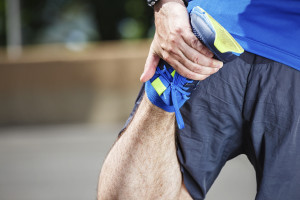 You have to train for a triathlon that you didn’t sign up for, you get none of the fringe benefits and you don’t get to check it off your bucket list because you won’t be entering the race.
You have to train for a triathlon that you didn’t sign up for, you get none of the fringe benefits and you don’t get to check it off your bucket list because you won’t be entering the race.
I am referring to a standard, and important aspect of rehabilitation for car crash injuries which inevitably progresses from “passive therapies” to “active rehabilitation”.
Passive therapies are when you go to a massage therapist, physiotherapist, chiropractor or other hands-on therapist who administers some sort of therapy to the injured areas of your body to help along the healing process.
Over time the improvement in your overall recovery slows to a crawl and stops, with passive therapies becoming like a long-release medication that provides only temporary relief. This is often when active rehabilitation is prescribed; the “end of the road” of medical care for most car crash victims; a last hope for as complete a recovery as possible.
A kinesiologist works with you to put in place and progress with a stretching and strengthening program designed to increase strength in areas that have been weakened by your injuries as well as to stretch areas that are so tight that they impede your further recovery.
The kinesiologist starts slow, carefully assessing your status so as to establish a program that you can handle. This might feel like an impossibility, when every movement brings on discomfort and pain, but kinesiologists are trained to find a starting point that makes sense, even if the “workout” doesn’t look like much of a workout at all.
By following through with the exercise regime that has been prescribed for you, your strength and flexibility gradually improve. Your kinesiologist periodically reviews and modifies your program according to your increased strength and flexibility.
Eventually, an end point is reached: a point where your strength and flexibility have been improved as far as your crash injuries allow. You have reached your maximum medical and functional outcome. Unfortunately, it will be necessary to continue with your strengthening and stretching program in order not to lose the gains you have made.
Contrast that with a 45 year old desk jockey with a growing paunch who decides to enter an entry level “sprint” distance triathlon. The motivation of re-learning how to swim after 30 years of not having swum a length and putting miles on my running shoes and bicycle comes from the promise of feeling more energy and being healthier. There is also the promise of doing something about that paunch and being able to take an item off my bucket list.
I deal with the aches and pains that come with straining muscles to work harder than they’ve ever worked, but those are the very best of aches and pains. On days when my motivation fades, I can remind myself of my goal and all the good things that come with it.
The person choosing to sign a car crash victim up for a triathlon is the person who choses not to give their driving the full attentiveness it requires. Consider the small amount of effort it takes to drive attentively in comparison to the training that car crash victims must undergo just to build themselves back, though never fully back, to where they were before a senseless crash.
Published … in the Kelowna Capital News
Posted … on Kelowna Capital News Online

0 Comments